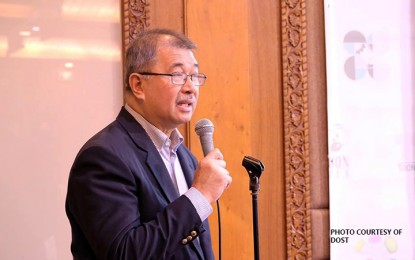
DOST Secretary Fortunato de la Peña
MANILA – Department of Science and Technology (DOST) Secretary Fortunato de la Peña is encouraging target individuals to use the DOST-funded radiation monitoring facility in Quezon City.
"The facility is now fully operational. New service includes micronucleus assay to determine exposure to radiation and other mutagens," he told the Philippine News Agency Thursday.
Located at the Biomedical Research Section, Atomic Research Division of the Philippine Nuclear Research Institute, the facility has been offering dicentric chromosome assay, a biomarker for radiation exposure, for a fee of PHP1,750 per blood sample.
Workers exposed to radiation, such as X-ray technicians, interventional doctors, radiology technologists, and nuclear medicine workers can use the facility.
"Researchers and students may also use the facility, and may be charged with a minimal fee," de la Peña said.
He added the general public may also use it "in case of nuclear or radiation incident".
The facility has some industrial radiographers as regular clients, according to de la Peña.
Over PHP24-million funding from the DOST-Philippine Council for Health Research and Development was used to fund over PHP21.9 million for the equipment, and over PHP2 million for the research component of the facility.
Earlier, de la Peña said the PNRI aims to improve radiotherapy.
"This science and technology capacity is a crucial step to support the safety of nuclear workers, like the clinicians in the nuclear medicine wards, to deliver better healthcare for radiotherapy patients undergoing cancer treatment," he said.
The facility will also help prevent accidental radiation exposures, he added.
A combination of robotics, intelligent image analysis, and molecular diagnostic techniques in monitoring radiation exposure in the human body, is being used in the facility.
“Since it is well documented there is a wide difference in individual radiosensitivity, if such variations among patients are determined, clinicians will have a solid basis for personalized radiotherapies. This could be dose-escalation for 'radioresistant' patients to enhance tumor control without an increase in complications, or dose reduction for radiosensitive patients," de la Peña said. (PNA)
